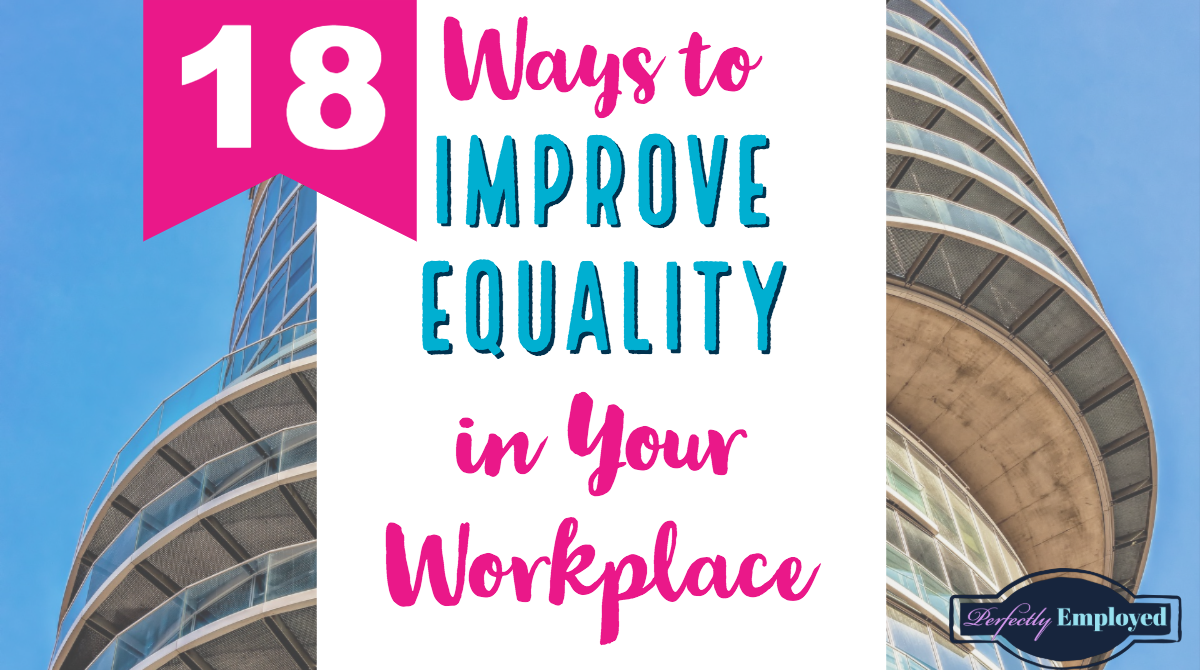
We all know that office politics can be complicated, especially if you’re trying to create a fair workplace. Whether you’re an employer or an employee, there are ways you can help to create better equality at work, with a balanced, diverse workforce.
1. Take a look at your current workforce.
What sort of balance is there? Look at management positions as well as general employees. What ratio of your senior staff are women or minorities? If there’s a big gap, you might need to ask yourself some hard questions about why.
2. Get an equal employment policy in place.
If you don’t already have one, get something into your company policies to ensure fairness in decisions about hiring, firing or promoting. Make sure you have policies to protect minorities at work, and to protect reasonable allowances. Review any system you put in place at regular intervals to be sure it’s up to date and remains fair.
3. Offer diversity training.
Make sure current staff understand company policy, and give employees training in sensitivity to diversity issues.
4. Make sure there are set consequences for discriminatory behavior.
Whether that’s a staff member using homophobic or racist language, or behaving in an inappropriate manner to women in the office, make sure you respond to any complaints, and discipline staff involved. This means other employees feel there will be a consequence if they are made to feel harassed at work, and increases their trust in you.
5. Be aware of other religious and cultural holidays when planning office events and closures.
If you close for Christmas, make sure staff of other faiths are able to take time off for their own celebrations. Don’t push staff to take part in the office Christmas party if they don’t celebrate.
6. Communicate.
Staff need to feel they will be listened to and taken seriously if they need to make a complaint. Invest in your HR team to make sure that happens.
7. Take inspiration from community leaders.
Look to leaders in minority communities, such as Cynthia Telles of the Latino Victory Project, who are working to promote diverse interests across the country.
8. Train your managers to spot tension
…or issues in the team and how to deal with them effectively and with sensitivity.
9. Think about work/life balance.
Women in the workplace often take the hit as the ones in charge of childcare, so be sure you’re offering suitable flexibility to allow them to excel at both. You could offer childcare vouchers to help offset the cost, or provide some on-site facilities. Allow staff to work remotely to avoid them having to take days off to care for sick children. Flexible working hours so they can still make the school run will also make a real difference.
10. Make sure family leave is available to both men and women.
Allowing fathers to take time off to care for their children will allow them to be more present in their children’s lives, and gives some relief to working moms who might be desperate to get back behind their desks.
11. Ensure you’re offering equal pay for equal work.
Help to close the gender pay gap further by making sure you have fair practices when it comes to hiring, pay rises and promotions. Each level should have a pay bracket that everybody gets, regardless of gender.
12. Offer mentorship.
Allowing your employees access to mentors will help them develop and excel in their roles. Make sure male and female mentors deal with employees to stop one group being spread too thinly. Mentoring is a key part of helping staff to progress in their careers. Offering the right people to guide them can make sure minority staff aren’t left behind, and has the added bonus for you of creating loyal employees who can be promoted within the company and are then retained longer by you.
13. Re-evaluate job specifications.
If you’re getting a high number of male applicants, look at your descriptions and see what could be putting women off for applying. Are you asking for more experience than the position really requires, or suggesting the workplace is a bit of a boy’s club? Be careful with your job adverts to encourage a wider variety of applicants.
14. Give staff some predictability.
If you can’t offer a flexible working schedule, make sure staff do know well in advance when they’re required to be at work. With shift work, like retail or hospitality, offering details of shifts early gives parents time to arrange for childcare and will minimize the need for shift swapping.
15. Be open about salaries.
This doesn’t mean you need to tell everyone exactly what everybody else earns, but don’t be secretive either. Clearly advertise jobs with a salary range that lines up with the salaries of current staff. Allow your staff to openly discuss wages with you, and with each other. If people felt free to talk money, they won’t worry they’re earning less than their colleagues, due to discrimination.
16. Lead by example.
Examine your own biases and see if there are any behavior changes that you could make. Seeing you make the effort will show employees you’re taking new policies seriously. Check your language use; do you automatically lean on gendered terms? Do you ask men about their wives without knowing if their partner is female? Consider who you ask to do things. Is it always a woman that you ask to sort out coffees for a meeting or to arrange the office Secret Santa?
17. Attract younger talent by making sure company is keeping up with modern technology and ways of working.
A young workforce could invigorate your offices, and bring in some new ways of thinking and approaching your projects.
18. Mix up your teams.
Encourage staff to work with different people who they might not usually work with. Do this with varying groups for projects to help staff communication between different areas of the office. Forging new relationships with a variety of people will foster more effective teamwork and less likelihood of discrimination rearing its ugly head.
Save to Pinterest


